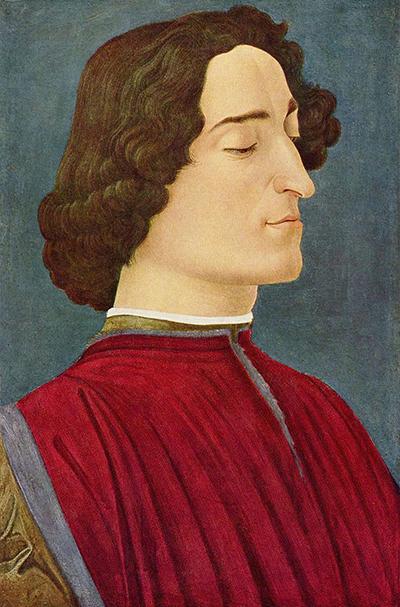This portrait of Giuliano de' Medici (1478) was one of a number from Early Renaissance artist Sandro Botticelli and can now be found in the Gemäldegalerie in Berlin, Germany
Tragically, this painting was completed just a few months before its subject was assassinated in the Pazzi Conspiracy. Even the powerful figures of the Papal States of Italy were not immune from the political and religious fighting across states which left the region in a permanent flux of instability and paranoia.
Sandro Botticelli would go on to produce several different portraits of his portrait subject, underlining the significance of this figure, as well as the Medici family in general. Many of Botticelli's other portraits would be of mythological or religious figures where as in this case he could refer back to the subject in person and potentially find new avenues of interest to cover in future paintings.
The Medici family were equally passionate about the arts as they were powerful. Giuliano de' Medici himself was depicted by all manner of famous artists in a variety of mediums including frescos, drawings and sculpture. A terracotta bust by Andrea del Verrocchio of the great man can be found in the National Gallery of Art in Washington D.C.
Sadly, Giuliano's political assassination was brutal - killed by a sword wound to the head and stabbed 19 times. To lose his life at only 25 showed how cheap life had become during this period of European history. He was laid to rest in a tomb which included a Michelangelo's Madonna and Child statue.
What is a beautiful portrait is overshadowed by the events of a few months later and the brutal death of its subject. The charming and understandably flattering depiction of this young but powerful man helped to create almost a brand of Guiliano, which prediactably grew in popularity after his death. With no photography or mass media at this time, portrait paintings offered an opportunity to shape the way people would be perceived by future generations.
The later portraits by Botticelli of Guiliano would use symbolism of death, suggested that they had been produced after his assassination. There were doves sitting on dead branches and also some with half-opened doors in the background which pointed to the artist already being aware of his demise.




